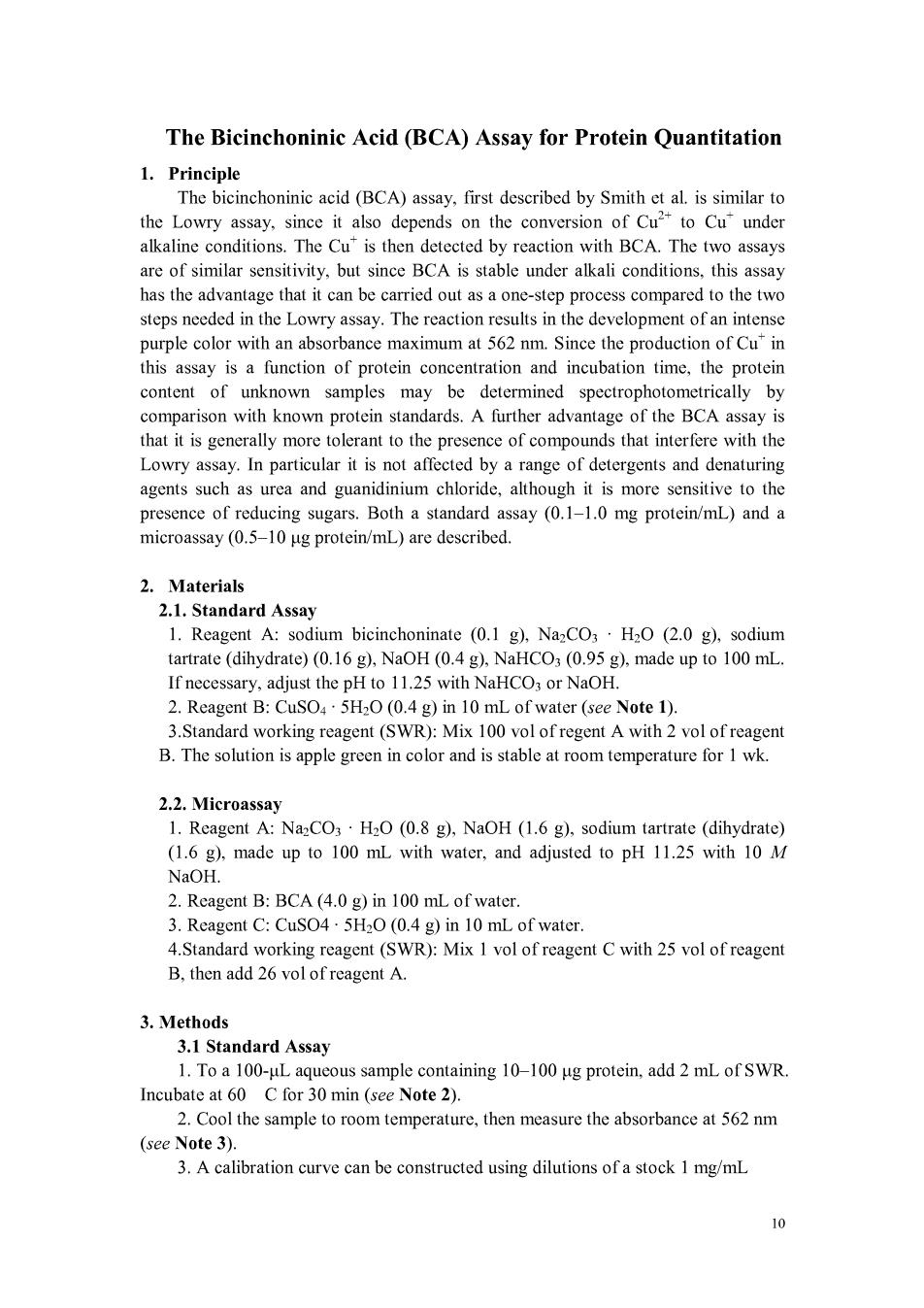正在加载图片...

The Bicinchoninic Acid(BCA)Assay for Protein Quantitation 1.Principle The bicinchoninic acid (BCA)assay,first described by Smith et al is similar to the Lowry assay,since it also depends on the conversion of Cu to Cu"under alkaline conditions.The Cu'is then detected by reaction with BCA.The two assays are of similar sensitivity,but since BCA is stable under alkali conditions.this assay steps needed in the Lowry assay.The reaction results in the development of an intense purple color with an absorbance maximum at 562 nm.Since the production of Cu"in this assay is a function of protein concentration and incubation time,the protein content of unknown samples may be determined spectrophotometrically by c rison with known protein standards.A further of the BCA a that it is generally more tolerant to the presence of compounds that interfere with the Lowry assay.In particular it is not affected by a range of detergents and denaturing agents such as urea and guanidinium chloride,although it is more sensitive to the of reducing sugars.Both a standard assay (0.1-1.0 mg protein/mL) ssay(0.5-10 ug protein/mL)are descr ribed 2.Materials 2.1.Standard Assay 1.Reagent A:sodium bicinchoninate (0.1 g).NazCOH2O(2.0 g).sodium tartrate (dihydrate)(0.16 g).NaOH (0.4 g).NaHCO3(0.95 g).made up to 100 mL. If necessary,adjust the pH 11.25 with NaHCO,or NaOH. 2.Reagent B:CuSO5H2O(0.4 g)in 10 mL of water (see Note 1). 3.Standard working reagent(SWR):Mix 100 vol of regent A with 2 vol of reagent B.The solution is apple green in color and is stable at room temperature for I wk. 2.2.Microassay 1.Reagent A:(0.8 g).NaOH(1.6 g),sodium tartrate (dihydrate) (1.6 g),made up to 100 mL with water,and adjusted to pH 11.25 with 10 M NaOH 2.Reagent B:BCA(4.0 g)in 100 mL of water 4.Standard w B.then add 26 vol of reagent A. 3.Methods 3.1 Standard Assav 1.To a 100-uL aqueous sample econtaining 10-100 ug protein,add 2 mL of SWR Incubate at 60 C for 30 min (see Note 2). 2.Cool the sample to room temperature,then measure the absorbance at 562 nm (see Note 3). 3.A calibration curve can be constructed using dilutions ofa stock 1 mg/mL